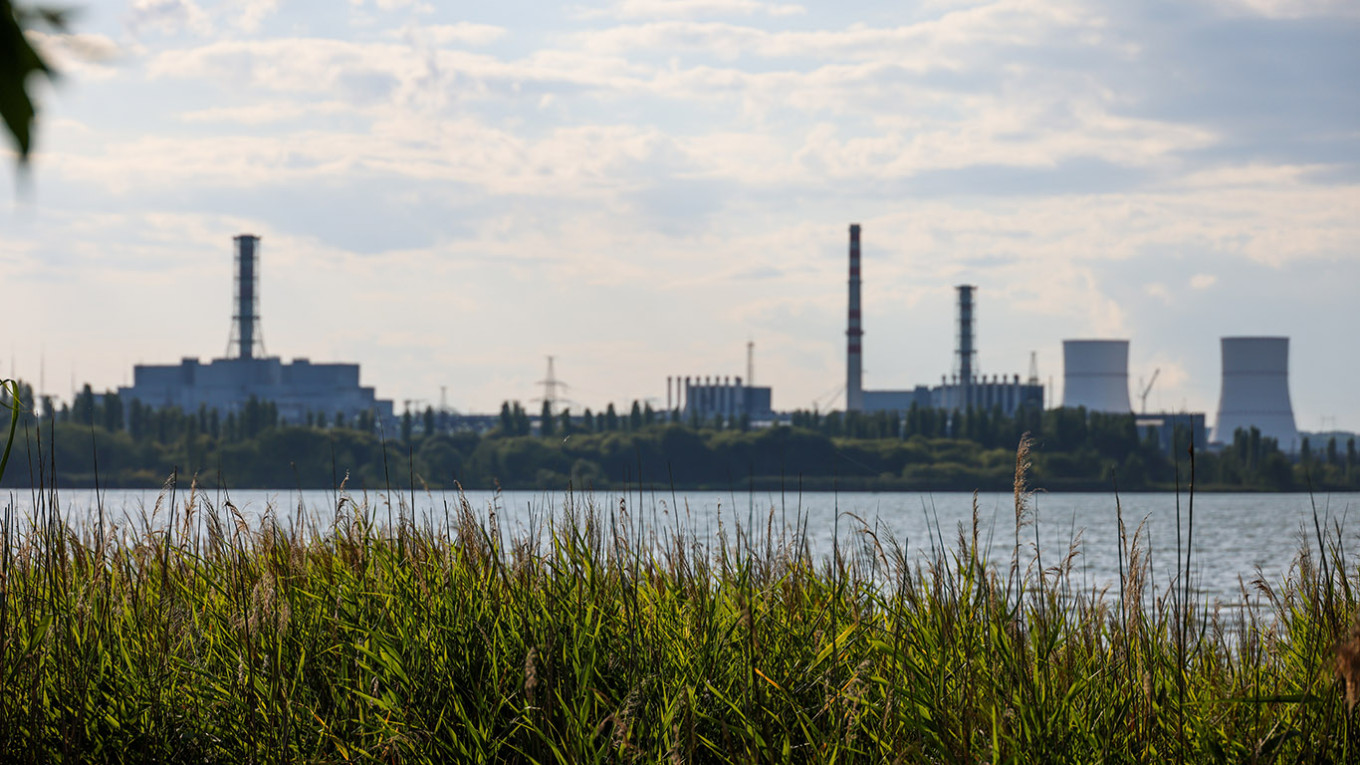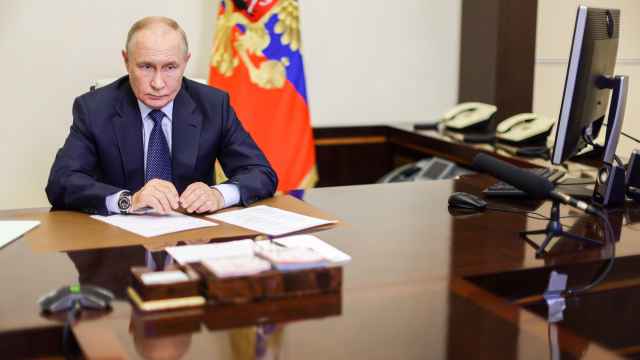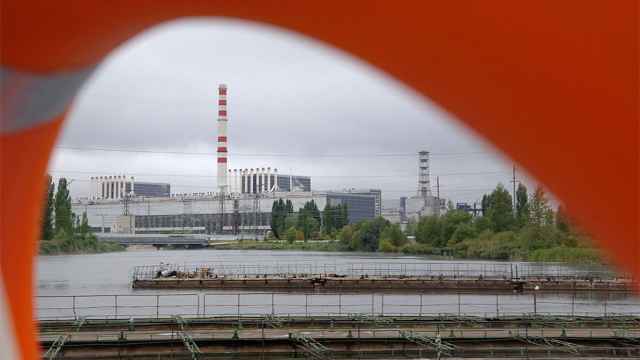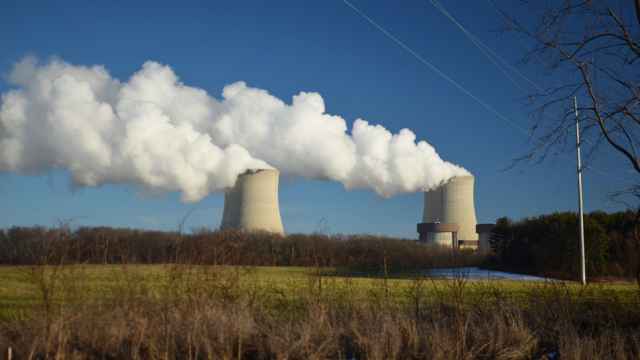From the very beginning of Ukraine’s offensive into Russia’s Kursk region on Aug. 6, there has been much discussion about the possible objectives of this operation. Simply glancing at the map begs the question of whether one objective of the Ukrainian incursion might be the seizure of the Kursk nuclear plant, located just 60 kilometers from the border.
It is a scenario the Russian side is taking seriously. Already Rosatom, Russia’s state nuclear corporation, had begun withdrawing staff from the plant and Russian troops are hastily digging trenches around it.
The mere possibility of a nuclear plant being seized during a war is a nightmare scenario for any nuclear and radiation safety specialist. But after the almost two-and-a-half-year-long Russian occupation of the Zaporizhzhia nuclear plant and the seizures (again, by Russia) of the Chernobyl exclusion zone and the research reactor in Sevastopol during the occupation of Crimea in 2014, such scenarios have become more possible. The longer Russia’s aggression against Ukraine continues, the more common the threat of an accident will become.
While we do not know how events will unfold, our analysis at Bellona and recommendations from the IAEA make clear that should nuclear plants be enveloped by war, every effort should be made to avoid a direct assault on them with heavy weapons. The defending side should not deploy troops at nuclear plants, which would turn them into military targets. Should a nuclear plant be surrounded, it is better to surrender it through negotiations rather than have the facility be attacked or used as a staging ground for attacks.
Having considered these principles, there are a few hypothetical plans that Ukraine could have for the Kursk nuclear plant as its incursion into Russia continues. These scenarios have repeatedly surfaced in the media, and it makes sense to address them in detail.
One theory is that Ukraine may connect the Kursk nuclear plant to its own energy system. I think this is the least likely objective. Should the plant be seized, the safest course of action for its operators would be to put all of its reactors into cold shutdown mode, which stops electricity generation.
Secondly, to direct power toward Ukraine would require a functioning infrastructure of substations and high-voltage power lines. Two power lines — one at 330 kV and the other at 750 kV— currently run from the Kursk plant through Ukrainian-controlled Sudzha towards Sumy in Ukraine. But the state of these lines is questionable, especially on the Ukrainian side given Russia’s intensive bombing of the country’s energy infrastructure.
Thirdly, the energy systems of Russia and Ukraine are not currently connected or synchronized. Since Ukraine switched to the European energy system in the first months of the war in 2022, connecting a generating facility on Russian territory to the Ukrainian energy system would require not only functioning infrastructure on both sides of the front, but possibly the installation of additional equipment to integrate part of Russia’s energy infrastructure into the Ukrainian system. It is unlikely that this could be done in wartime conditions in a frontline zone.
Taking a long-term view of the Kursk nuclear plant, we must consider that its two Chernobyl-style RBMK reactors — units 3 and 4 — are nearing the end of their 45-year operational lifespan and are due to be shut down within the next 4 to 6 years. Rosatom, Russia’s state nuclear corporation, is carrying out modernization work to allow them to function for another five years. But these efforts could be halted due to the Ukrainian incursion.
To replace these retiring reactor units, Rostom is building the Kursk NPP-2, equipped with two VVER-TOI power units, near the existing Kursk nuclear plant. The first of these units is expected to be operational as early as next year unless the war causes delays. Such a delay would certainly cause Rosatom some pain, given the outsized role this reactor project plays in Rosatom’s self-image — but it wouldn’t offer much advantage to Ukraine.
Some have also speculated that Ukraine is trying to deprive Russia of a vital energy source — hopefully by shutting it down safely rather than a nuclear accident. But the numbers do not support this.
One would like to believe that if such a plan exists, it does not involve the loss of the facility due to a nuclear accident, but rather involves its shutdown through standard procedures.
The Kursk nuclear plant is the largest energy source in its eponymous region, providing nearly 90% of its total power generation capacity. In 2023, it produced 19.1 billion kWh of electricity (before the shutdown of Unit 2 in January), which is over twice the 8.9 billion kWh per year the region’s inhabitants consume.
As a result, most of the electricity generated by the plant is supplied to neighboring regions and to the unified energy system of Russia. The plant’s loss could indeed cause energy problems to the Kursk region itself — especially since the plant serves as a central distribution hub in its energy system.
But the loss of the plant would not put pressure on neighboring regions, which can easily compensate from other sources. To put this into perspective, within the unified energy system of central Russia, which includes 18 regions around Moscow, the Kursk nuclear plant accounts for just 2 GW out of a total 50 GW capacity, and it is currently the smallest nuclear plant when compared to three others in this area of the country — the Smolensk, Novovoronezh and Kalinin nuclear plants.
The most rational objective for seizing the Kursk nuclear plant would be to use it in exchange for the Zaporizhzhia nuclear plant in any upcoming negotiations.
When we consider that Ukraine’s army is not only advancing in the Kursk region, but is also fortifying its position by bringing in reserves and other defenses, it appears that Kyiv intends to hold its gains — possibly until the end of the war and the start of negotiations. The presence of a nuclear power plant within the captured territory would significantly increase its leverage and would confirm the strategic nature of this operation.
Nevertheless, as a representative of an environmental organization, I sincerely hope that we do not see any attack or attempt to seize the Kursk nuclear plant. There is simply no safe way to do it. Any attempt to do so carries risks of a nuclear or radiation accident, to say nothing of damaging the political support Ukraine enjoys from its Western allies.
Ukrainian troops are not doing anything that Russia has not done to Kyiv’s territory. Ukraine has the right to defend itself against Russian aggression by any means it deems effective and acceptable — so long as they do not involve committing war crimes.
But if ending this war on terms acceptable to Ukraine involves fighting around nuclear plants on both sides of the front, such a process must proceed with minimal risk of a nuclear disaster.
A Message from The Moscow Times:
Dear readers,
We are facing unprecedented challenges. Russia's Prosecutor General's Office has designated The Moscow Times as an "undesirable" organization, criminalizing our work and putting our staff at risk of prosecution. This follows our earlier unjust labeling as a "foreign agent."
These actions are direct attempts to silence independent journalism in Russia. The authorities claim our work "discredits the decisions of the Russian leadership." We see things differently: we strive to provide accurate, unbiased reporting on Russia.
We, the journalists of The Moscow Times, refuse to be silenced. But to continue our work, we need your help.
Your support, no matter how small, makes a world of difference. If you can, please support us monthly starting from just $2. It's quick to set up, and every contribution makes a significant impact.
By supporting The Moscow Times, you're defending open, independent journalism in the face of repression. Thank you for standing with us.
Remind me later.








